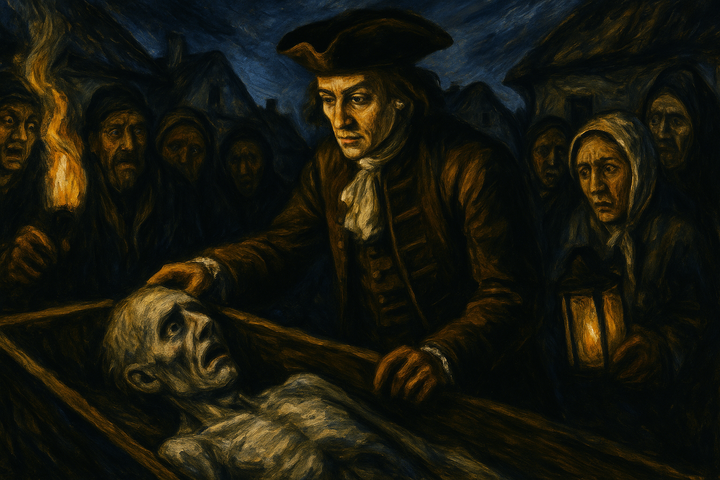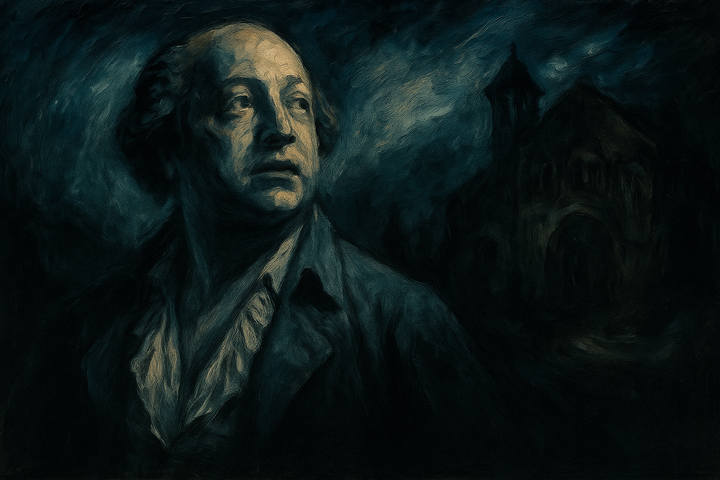The Enigma of Louis Gaufredi and Magdalen de la Palud: A Tale of Self-Proclaimed Sorcery

In an extraordinary tale from the early 17th century, Louis Gaufredi, the parish priest of Accouls in Marseilles, and a young woman named Magdalen de la Palud, confessed to being practitioners of sorcery. Louis received a small book filled with cryptic symbols and French verses from his uncle, Christopher Gaufredi. After five years, he read the verses and was visited by a devil in human form. The devil promised to fulfill all of Louis' desires in exchange for his good deeds. Louis, enticed by the offer, asked for a reputation for wisdom and virtue and the ability to inspire love in any woman or girl he wished, simply by breathing on them.
The Seduction of Magdalen de la Palud
Among those he enchanted was Magdalen, a nine-year-old girl and the daughter of a gentleman named Mandole de la Palud. Under the guise of spiritual guidance, Louis convinced Magdalen to devote herself to the devil. Over the years, he manipulated her into signing several contracts in her own blood, pledging herself to the devil. He also gave her a familiar demon that followed her everywhere.
The Witches' Sabbath and the Mark of the Devil
Louis' power extended to transporting Magdalen to the witches' sabbath, a gathering of witches held on a high mountain near Marseilles. There, she saw people from all nations, including Louis, who held a high rank. She was marked with characters at the sabbath, and she later became a nun and was believed to be possessed by the devil.
The Trial and the Unraveling of the Truth
However, Louis' dark deeds did not remain hidden for long. His illicit relationship with Magdalen and his manipulation of other women through his diabolical powers were eventually exposed. He was arrested in 1611, and during the trial, Magdalen gave a detailed account of Louis' magic and the abominations he had committed.
The Verdict and the End of Louis Gaufredi
Despite the evidence against him, Louis maintained his innocence, blaming the devil for the accusations. He claimed to have burned the magic book and the contracts, but they mysteriously reappeared. He described the witches' sabbath in detail, including the presence of a large, lugubrious bell and the various horrors committed there. The court, however, found him guilty of sorcery and sentenced him to be publicly humiliated, tortured, and burned alive. His ashes were scattered to the wind.
The Aftermath and Reflection
Despite his gruesome end, some believed that Louis was a sorcerer only in his imagination, and that treating such individuals as madmen rather than punishing them as sorcerers could help dispel such beliefs. Yet, it is undeniable that the tale of Louis Gaufredi and Magdalen de la Palud serves as a chilling reminder of the power of the imagination, the allure of the forbidden, and the depths to which individuals can descend when led astray by dark forces.
In retrospect, one of the most disturbing aspects of this tale is the age of Magdalen de la Palud at the time of her seduction by Louis Gaufredi. She was only nine years old, a child by any standard. The fact that she was manipulated into such a dark pact at such a tender age raises serious questions about the societal norms and protections for children during that time.
It's important to remember that children, due to their innocence and lack of life experience, are particularly vulnerable to manipulation and coercion. The story of Magdalen serves as a stark reminder of the importance of safeguarding the rights and welfare of children. It underscores the need for societies, both past and present, to protect their youngest members from exploitation and harm.
In the context of the 17th century, when this story took place, societal understanding of child protection was vastly different from today's standards. However, the tale of Magdalen de la Palud should serve as a lesson for all times. It's a chilling reminder of what can happen when the innocence of childhood is exploited, and it emphasizes the timeless importance of vigilance and protection for the most vulnerable among us.




